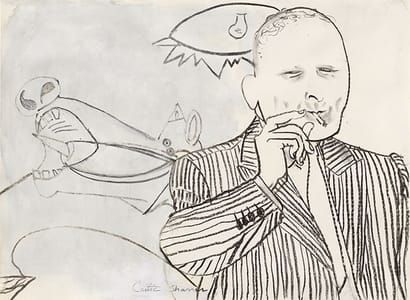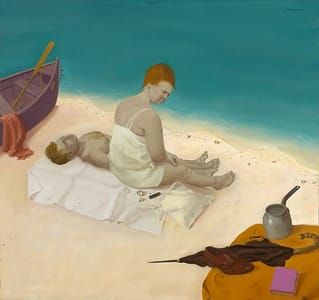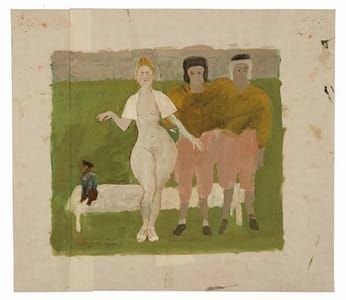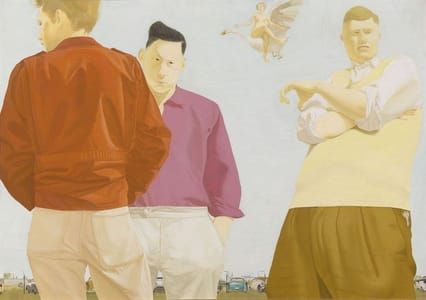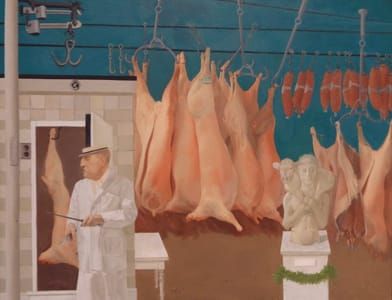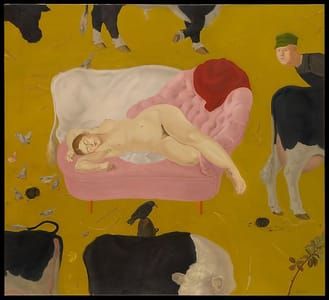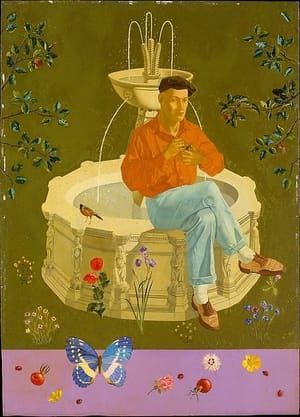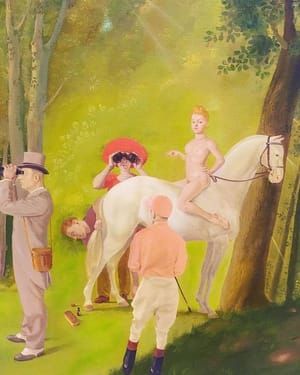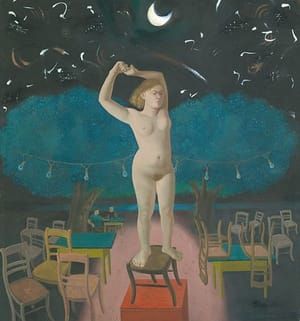

Leda and the Folks, 1963
Honoré Sharrer
At nearly 9 x 6 feet, “Leda and the Folks,” from 1963, is ... one of Sharrer’s earlier forays into surrealism.
The partly abstract work features three somewhat oddly proportioned figures. Two are based on Elvis Presley’s parents, Gladys and Vernon, while the third, a Renaissance-like, golden-haired nude young woman, represents Sharrer’s take on the ancient Greek myth of Leda and the Swan, in which Zeus transformed himself into a swan to get close to and seduce a beautiful woman.
As exhibit notes explain, the painting came in part from Sharrer’s interest in examining the intersection of myth and the celebrity culture that surrounded Elvis Presley and other popular entertainment figures in the early 1960s.
[http://www.amherstbulletin.com/Smith-College-Art-Museum-celebrates-work-of-painter-Honore-Sharrer-13100813]
...At the onset of the 1960s, Sharrer adopted some Pop art elements in her work, while continuing to cultivate her surreal subject matter. At this point, a clear visual vocabulary emerges: lap dogs, melting cutlery, lit cigarettes, and cuts of meat form a recurring motif of dreamlike symbolism, in landscapes inhabited by circus folk, mythical creatures (Leda, of swan fame, is a regular), solemn children, and round-faced, nude, frankly unapologetic women who gaze directly at the viewer.
Sharrer kept painting up until her death in 2009, and the exhibition includes decade upon decade of works that show her continuing to develop and refine her themes: grappling with womanhood, waitressing, divorce, religion, and family life in a way that feels deeply personal and also relatable. One could spend a great deal of time unpacking the symbolic language, political and artistic satire, and feminist sentiment of Sharrer’s work — just ask M. Melissa Wolfe, who co–curated the retrospective for CMA (with Robert Cozzolino) and, in so doing, became a scholar of record on Sharrer.
[https://hyperallergic.com/371227/discovering-honore-sharrer-an-eclipsed-20th-century-surrealist-painter/]
108 x 72 in
Uploaded on Dec 15, 2017 by Suzan Hamer
Honoré Sharrer
artistArthur
Wait what?


